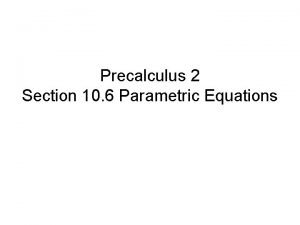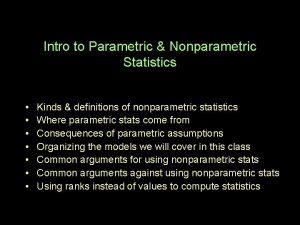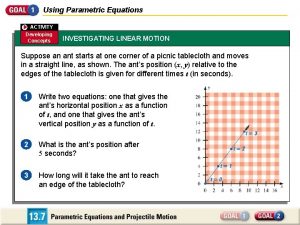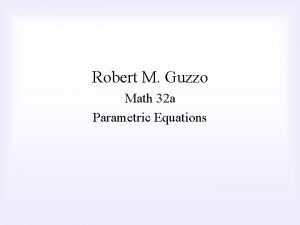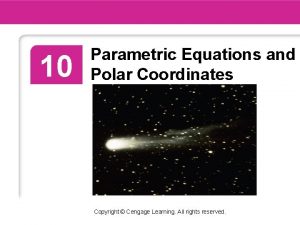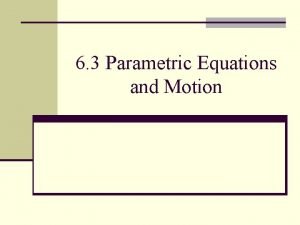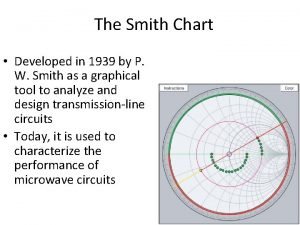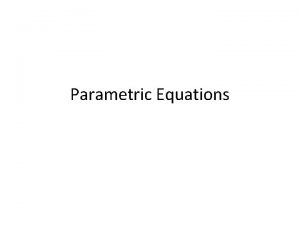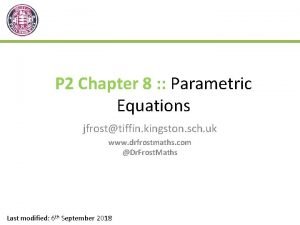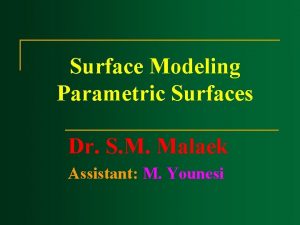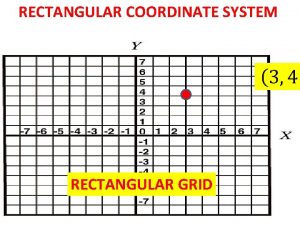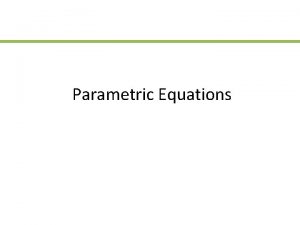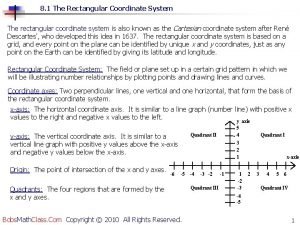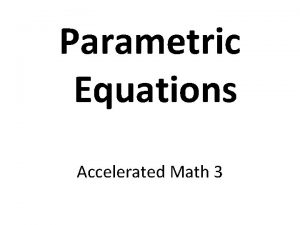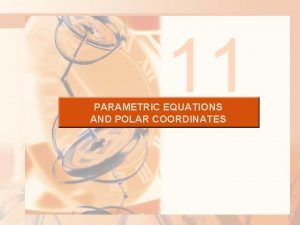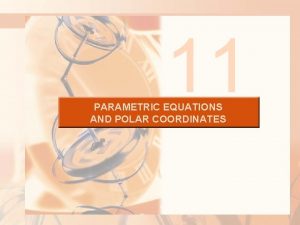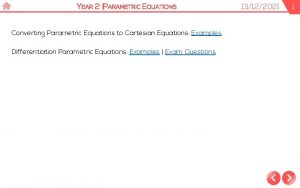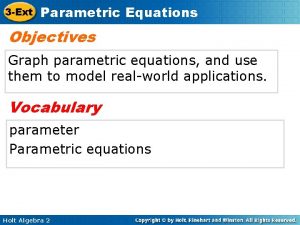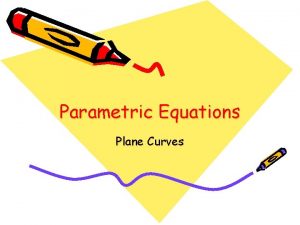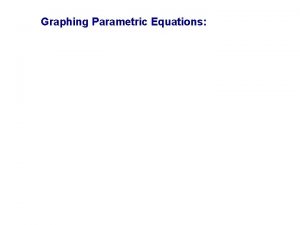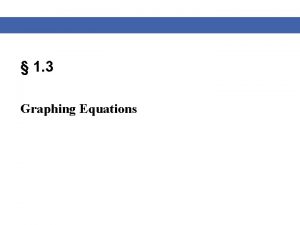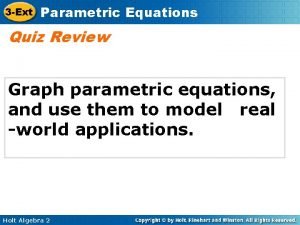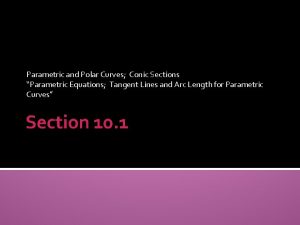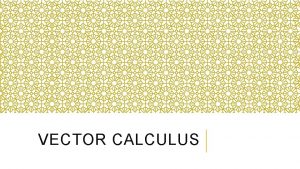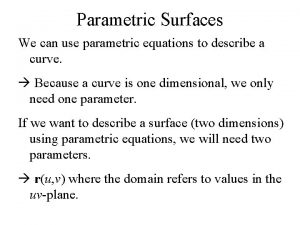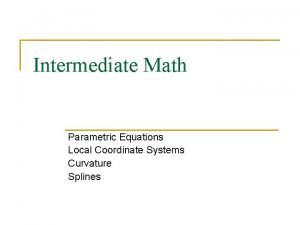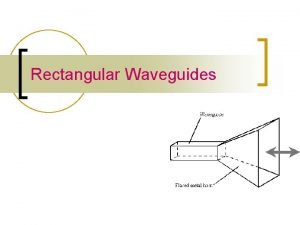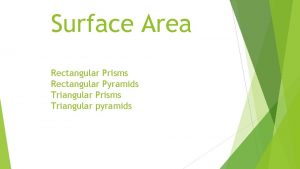Parametric Equations In a rectangular coordinate system you























- Slides: 23

Parametric Equations

In a rectangular coordinate system, you will recall, a point in the plane is represented by an ordered pair of number (x, y), where x and y equal the signed distance of the point from the y-axis and the x-axis respectively. In a polar coordinate system, we select a point, called the pole, and then a ray with vertex at the pole, called the polar axis. Comparing the rectangular and polar coordinate systems, we see that the origin in rectangular coordinates coincides with the pole in polar coordinates, and the positive x-axis in rectangular coordinates coincides with the polar axis in polar coordinates.

Parametric Equations


Sketching a Plane Curve The way to sketch a curve represented by a pair of parametric equations is to plot points in the xy-plane. Each set of coordinates (x, y) is determined from a value chosen for the parameter t. By plotting the resulting points in the order of increasing values of t, you trace the curve in a specific direction. This is called the orientation of the curve. Sketch the curve given by the parametric equations. Describe the orientation of the curve.



Eliminating the Parameter Many curves that are represented by sets of parametric equations have graphs that can also be represented by rectangular equations (in x and y). The process of finding the rectangular equations called eliminating the parameter Parametric equations Substitute In second equation Solve for t in One equation Rectangular equation

Identify the curve represented by the equations.

So we have an ellipse centered at (0, 0), with vertex (0, 4) and (0, -4) and minor axis of length 2 b=6













 Parametric equations
Parametric equations Univariate analysis tests
Univariate analysis tests Parametric test and non parametric test
Parametric test and non parametric test Parametric and non parametric algorithms
Parametric and non parametric algorithms Parametric vs non parametric test
Parametric vs non parametric test 9-3 polar and rectangular forms of equations
9-3 polar and rectangular forms of equations Linear motion equations
Linear motion equations Parametric equations word problems
Parametric equations word problems Parametric equations and polar coordinates
Parametric equations and polar coordinates Parametric motion
Parametric motion How to solve parametric equations
How to solve parametric equations Complete smith chart
Complete smith chart Parametric equations
Parametric equations Dr frost parametric equations
Dr frost parametric equations Chapter 7 conic sections and parametric equations
Chapter 7 conic sections and parametric equations Pre and post coordinate indexing system
Pre and post coordinate indexing system Coordinate bond of co
Coordinate bond of co Scene sketch
Scene sketch Convert linear equation to polar form
Convert linear equation to polar form Texture synthesis by non-parametric sampling
Texture synthesis by non-parametric sampling Surface modelling in cad
Surface modelling in cad Matplotlib parametric plot
Matplotlib parametric plot Example of parametric statistics
Example of parametric statistics Parametric statistics
Parametric statistics
